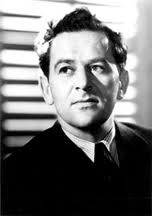by Redazione Mubat
A partire dal 21 giugno 1943, Battipaglia inizia a essere bombardata dagli Alleati, ma questo segna solo l’inizio di un periodo estremamente difficile. La città diventa un obiettivo strategico, come molte altre città italiane, con l’intento di indebolire il prestigio del regime fascista, mentre ancora non è stata individuata l’area come teatro dello sbarco.
Con il 9 settembre, la città diventa uno dei principali obiettivi tanto per gli Alleati quanto per i Tedeschi, il che porta alla sua distruzione e semina lutti tra la popolazione.

La guerra è anche una forma di propaganda e la Seconda Guerra Mondiale è, di fatto, il primo conflitto in cui viene utilizzata in modo massiccio. Il documentario “Thunderbolt”, realizzato nel 1947, ha due particolarità: la prima riguarda la partecipazione di personaggi del mondo dello spettacolo e la seconda è che alcune scene sono state girate durante i bombardamenti su Battipaglia.
Il titolo del documentario deriva dal nome del bombardiere monoposto P-47 Thunderbolt, e celebra le gesta dei suoi piloti, con Battipaglia che, come tante altre città, fu una vittima innocente e inerme. Il regista William Wyler, famoso per film come “Vacanze Romane” e “Ben Hur”, fece montare cineprese sugli aerei (visibili proprio nel documentario) e utilizzò alcune di queste immagini per creare “Thunderbolt”. Wyler collaborò con il regista John Sturges (famoso per “Il vecchio e il mare” e “Sfida all’OK Corral”) e riuscirono a coinvolgere l’attore celebre James Stewart.
Questa esperienza di Wyler durante la guerra, lavorando con i bombardieri (realizzò anche “Memphis Belle” sulle famose Fortezze Volanti e “The Fighting Lady“), lo ispirò per il film “I migliori anni della nostra vita“, che gli valse l’Oscar.
“Thunderbolt” racconta in realtà un periodo successivo, ovvero la marcia di avvicinamento a Roma nel maggio del 1944, con gli aerei di base in Corsica. Tuttavia, come descritto su Wikipedia, contiene anche immagini della sua esperienza nell’area salernitana nel 1943.
From the 21st of June 1943, Battipaglia began to be bombarded by the Allies, but this marked only the beginning of an extremely difficult period. The city becomes a strategic target, like many other Italian cities, with the intention of weakening the prestige of the fascist regime, while the area has not yet been identified as the theater of the landing.
On the 9th of September, the city becomes one of the main targets for both the Allies and the Germans, which leads to its destruction and sows mourning among the population.
War is also a form of propaganda and World War II is, in fact, the first conflict in which it is used massively. The documentary “Thunderbolt“, made in 1947, has two peculiarities: the first concerns the participation of characters from the world of entertainment and the second is that some scenes were shot during the bombing on Battipaglia.
The title of the documentary comes from the name of the single-seat bomber P-47 Thunderbolt, and celebrates the exploits of its pilots, with Battipaglia that, like many other cities, was an innocent victim and unarmed. The director William Wyler, famous for films like “Roman Holidays” and “Ben Hur”, had cameras mounted on planes (visible right in the documentary) and used some of these images to create “Thunderbolt”. Wyler collaborated with the director John Sturges (famous for “The Old Man and the Sea” and “Challenge OK Corral”) and managed to involve the famous actor James Stewart.
Wyler’s wartime experience working with bombers (he also made “Memphis Belle” on the famous Flying Fortresses and “The Fighting Lady“) inspired him for his Oscar-winning film, “The Best Years of Our Lives“.
“Thunderbolt” actually tells a later period, that is the approach march to Rome in May 1944, with base aircraft in Corsica. However, as described on Wikipedia, it also contains pictures of his experience in the area of Salerno in 1943.